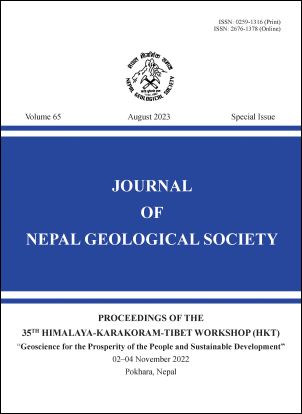An innovative approach: Combining OTV logging and manual core logging for geotechnical site investigation - A case study from Lesser Himalaya of eastern Nepal
DOI:
https://doi.org/10.3126/jngs.v65i01.57752Keywords:
Optical televiewer, OTV, borehole logging, geotechnical investigationAbstract
Geotechnical exploration in the youngest Himalayan range requires a thorough understanding of subsurface geological conditions, including lithological, structural, and mechanical properties. Accurate data obtained from test boring, in-situ borehole tests, and logging are essential for this purpose. Down-hole optical imaging, such as the optical televiewer (OTV), can provide a cost-effective and efficient approach to capturing structural geotechnical data by providing high-resolution, oriented images of borehole walls. This study aims to test the effectiveness of a hybrid logging method that combines OTV imaging with manual core logging for geotechnical investigations in the eastern part of the Lesser Himalaya, Nepal. The hybrid method addresses inherent problems such as actual depth matching, errors in the reorientation of acquired cores, and ambiguity in the placement of weak zones like intensely fractured zones, fault gouges, and sheared zones. This approach is critical for identifying weak zones and ensuring safe and stable construction.
Downloads
Downloads
Published
How to Cite
Issue
Section
License
© Nepal Geological Society




